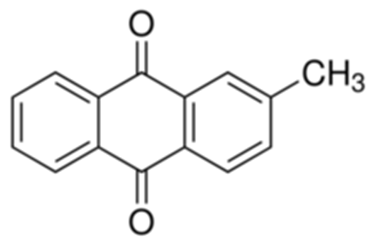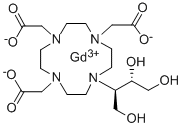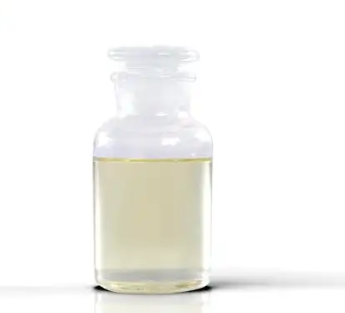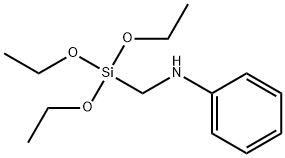Chloro(tricyclohexylphosphine)gold(I) literature
Dinuclear Au(I), Au(II) and Au(III) Complexes with (CF2)n Chains: Insights into The Role of Aurophilic Interactions in the Au(I) Oxidation
Portugués, Alejandro,Bautista, Delia,Gil-Rubio, Juan
supporting information, p. 15815 - 15822 (2021/10/04)
New dinuclear Au(I), Au(II) and Au(III) complexes containing (CF2)n bridging chains were obtained. Metallomacrocycles [Au2{μ-(CF2)4}{μ-diphosphine}] show an uncommon figure-eight structure, the helicity inversion barrier of which is influenced by aurophilic interactions and steric constraints imposed by the diphosphine. Halogenation of LAu(CF2)4AuL (L=PPh3, PMe3, (dppf)1/2, (binap)1/2) gave [Au(II)]2 species, some of which display unprecedented folded structures with Au?Au bonds. Aurophilic interactions facilitate this oxidation process by preorganizing the starting [Au(I)]2 complexes and lowering its redox potential. The obtained [Au(II)]2 complexes undergo thermal or photochemical elimination of R3PAuX to give Au(III) perfluorinated auracycles. Evidence of a radical mechanism for these decomposition reactions was obtained.
Neutral R3PAuGe9(Hyp)3 (R=Et, nPr, iPr, nBu, tBu, Cy) (Hyp=Si(SiMe3) Clusters give new insights into the ligand strength of the metalloid [Ge9(Hyp)3]? cluster
Gienger, Christian,Schnepf, Andreas
, p. 1695 - 1701 (2021/05/10)
We present new insights into the ligand strength of the metalloid [Ge9(Hyp)3]? cluster (Hyp=Si(SiMe3)3) alongside novel neutral Ge9 clusters of the composition R3PAuGe9(Hyp)3 (R=Et, nPr, iPr, nBu, tBu, Cy). These clusters are synthesized in good yields from KGe9(Hyp)3 and R3PAuCl. Further experiments with these new clusters show that the ligand strength of [Ge9(Hyp)3]? is in between aryl and alkyl phosphines.
Gold(I) complexes with chloro(diaryl)silyl ligand. Stoichiometric reactions and catalysis for O-functionalization of organosilane
Kanda, Atsushi,Osakada, Kohtaro,Tsuchido, Yoshitaka
, (2020/03/11)
An Au(I) complex with a chloro(diphenyl)silyl ligand [Au(SiPh2Cl)(PCy3)] (1a) is obtained from the reaction of Ph2SiH2 with [AuCl(PCy3)]. (4-FC6H4)2SiH2, (4-MeC6H4)2SiH2, and Ph2GeH2 react with [AuCl(PCy3)] to form complexes with the chlorodiarylsilyl ligand, [Au(SiAr2Cl)(PCy3)] (1b: Ar = C6H4-4-F, 1c: Ar = C6H4-4-Me) and with the chloro(diphenyl)germyl ligand, [Au(GePh2Cl)(PCy3)] (2a), respectively. Complex 1a reacts with H2O to form Ph2SiH(OH) and (Ph2SiH)2O, whereas the reaction of EtOH with 1a yields Ph2SiH(OEt) exclusively. Complex 1a catalyzes the hydrolysis of Ph2SiH2 ([Au]:[H2SiPh2]:[H2O] = 0.05:1.0:10.0) at 60 °C to yield Ph2SiH(OH) and (Ph2SiH)2O. The reaction of Ph2SiH2 with HOEt in the presence of a catalytic amount of 1a affords Ph2SiH(OEt). Both stoichiometric and catalytic reactions using 1a lead to the recovery of [AuCl(PCy3)] from the reaction mixture.
The leaving group in Au(i)-phosphine compounds dictates cytotoxic pathways in CEM leukemia cells and reactivity towards a Cys2His2model zinc finger
De Paiva, Raphael E. F.,Du, Zhifeng,Farrell, Nicholas P.,Peterson, Erica J.
, p. 16319 - 16328 (2020/12/03)
Gold(i)-phosphine auranofin-like compounds have been extensively explored as anticancer agents in the past decade. Although potent cytotoxic agents, the lack of selectivity towards tumorigenic vs. non-tumorigenic cell lines often hinders further application. Here we explore the cytotoxic effects of a series of (R3P)AuL compounds, evaluating both the effect of the basicity and bulkiness of the carrier phosphine (R = Et or Cy), and the leaving group L (Cl-vs. dmap). [Au(dmap)(Et3P)]+ had an IC50 of 0.32 μM against the CEM cell line, with good selectivity in relation to HUVEC. Flow cytometry indicates reduced G1 population and slight accumulation in G2, as opposed to auranofin, which induces a high population of cells with fragmented DNA. Protein expression profile sets [Au(dmap)(Et3P)]+ further apart from auranofin, with proteolytic degradation of caspase-3 and poly(ADP-ribose)-polymerase (PARP), DNA strand-break induced phosphorylation of Chk2 Thr68 and increased p53 ser15 phosphorylation. The cytoxicity and observable biological effects correlate directly with the reactivity trend observed when using the series of gold(i)-phosphine compounds for targeting a model zinc finger, Sp1 ZnF3.







